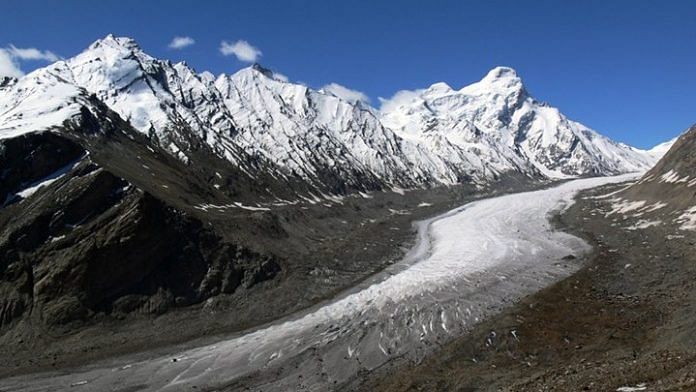Bengaluru: Fans of George R.R. Martin may dread winter, but people in India are more anxious about the longer and hotter summers they’ve experienced in recent years. If the heatwave alone wasn’t enough, there are large parts of India where there isn’t enough water to drink. Summer vacations have been extended by a week in Delhi and the monsoon is delayed by several days.
There are a number of reasons why this is happening, and one of them, a fact discovered by TERI and recently attested-to by US researchers, is that Himalayan glaciers are retreating.
Glaciers are significant in two major ways: First, they feed into rivers and global atmospheric circulation, affecting both the water cycle and the wind systems of the world, thus driving the overall climate of the world. Second, more specific to India, they are a major source of water during the ‘lean period’, when there is no rainfall or humidity. This is amply evident by the water crisis currently in India: the southern states have no glacial source and are caught in a bitter combat over water.
Cold War-era satellite leaves a clue
US researchers collected images from a declassified Cold War-era spy satellite that had secretly photographed the earth during the 1970s and 1980s. These images were then compared with additional satellite imagery through the 2000s, and scientists saw that glacial ice is now melting twice as much.
For this project, the researchers investigated changes in 650 large glaciers throughout the Himalayas. The findings made big news, especially since the study of Himalayan glaciers has been sparse as there is little historical data to compare the new data too.
TERI scientists, in a 2017 paper published in Climate Change, had revealed how Himalayan glaciers were decreasing in size and volume at varying but alarming rates. The most immediate impact of this was severe Indian weather — early and long summers along with a late, shorter monsoon.
Also read: Half a degree in global warming temperatures can be the difference between life & death
Two retreating glaciers
TERI’s analysis was based on changes in ice volume at Kolahoi and Chhota Shigri glaciers in the western Himalayas. While Chhota Shigra feeds the basin of the river Chenab, Kolahoi gives life to the Jhelum. Both rivers together supply water to the Indus river system.
In 2008, it set up the Glacier Research Programme to analyse impact of climate change in the Himalayas, especially its glaciers. The 2017 study revealed that from 1980 to 2015, the Kolahoi glacier lost 10 per cent of its length, 13.5 per cent of its surface area, and 18 per cent of its volume. The Chhota Shigri glacier, meanwhile, lost 2.6 per cent in length, 2.1 per cent in surface area, and 3 per cent of its volume.
“Despite being of different sizes and at similar altitudes, the study found that both glaciers are melting at different rates,” said Shresht Tayal, area convenor of the Centre for Himalayan Ecology.
Lesser ice due to rising temperatures means a loss of albedo — the earth’s ability to reflect sunlight back into space. But with volumes of melted ice being replaced by seas or land surface, the earth absorbs more heat — leading to further thawing of glaciers.
Impact on the subcontinent
A reduction in discharge of the Chenab and Jhelum due to glacial melting would mean a proportional loss of water availability in northern India and Pakistan. The biggest impact would be on one lakh hectares of apple orchards that produce 15,000 kg of the fruit each year, and generate a revenue of Rs 7,500 crore.
The melting has already begun affecting the livelihoods of millions of people in the region. Hydro-electric power stations have also faced an impact, and many will potentially be shut down as melt water runs out in the area. Primary activities and industries in the region, such as agriculture, depend heavily on water as well.
But as with every implication of the warming climate, that is not all. The timber industry in the region is heavily dependent on soil moisture. Due to increasing scarcity of snowfall, the moisture content in the ground has gone down, affecting the timber industry.
What’s the solution?
Solutions can range anywhere from smaller community projects to government restrictions on large industries. One emerging and ingenious idea is the construction of artificial glaciers such as the ice-stupa. These are useful in having localised reservoirs of ice and water.
In regions where such ice stupas cannot be sustained because of weather, a bigger push for regulation is required. Irresponsible and unregulated tourism is a major cause of environmental degradation in several Indian states, especially the hill states.
“Seasonal migration, which includes both movement of both tourists and locals, needs to be regulated,” said Tayal.
Also read: Indian summer monsoon amplified global warming 130,000 years ago






